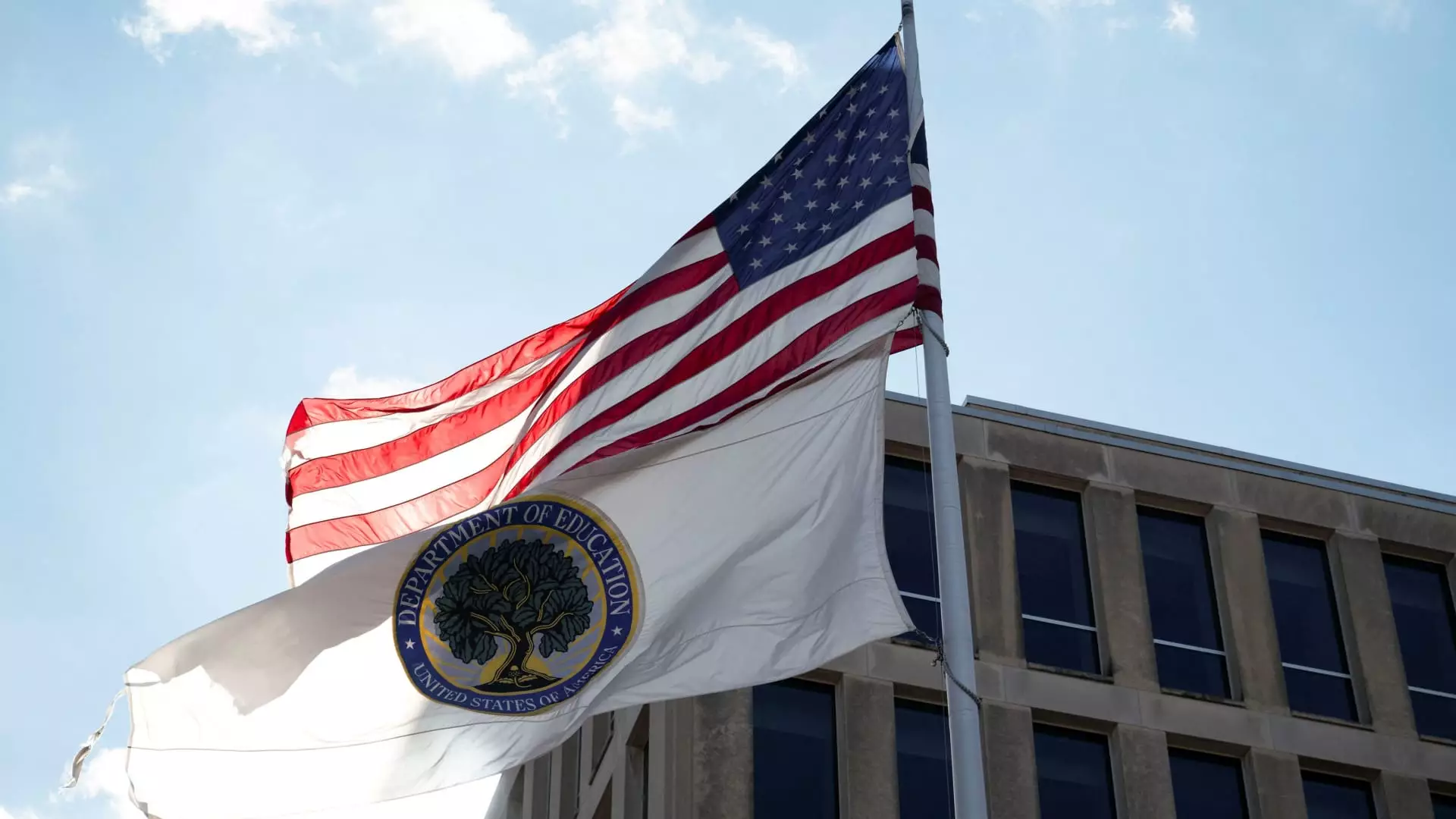The notion that education is the key to personal and societal advancement is an enduring ideal in America. Yet, recent staff layoffs at the Department of Education, as directed by former President Donald Trump, are casting a shadow of uncertainty over the future for many struggling federal student loan borrowers. Each cut not only signifies a disregard for public welfare but also underscores a disturbing trend of eroding essential government support for its citizens. With approximately 42 million Americans carrying student loan debt—exceeding a staggering $1.6 trillion—these cuts raise urgent questions about the accountability and responsiveness of the Federal Student Aid programs.
Reports suggest that the Department’s staff responsible for fielding borrower complaints were drastically reduced, leaving unresolved cases in limbo. According to conversations with various employees, approximately eight team members handling close to 800 unresolved complaints were part of these layoffs, effectively stranding borrowers who are already vulnerable and unsure of where to turn for help. The existing staff faces an insurmountable backlog, while borrowers languish in a cycle of stress and potential delinquency, unable to get timely responses to their complaints.
The Dangers of Resource Starvation
The Trump administration’s approach appears to be an orchestrated measure of “starving” the Department of Education—dismantling its capabilities while avoiding the long fight required for outright abolition. Experts in education policy have observed that the proposed executive order could worsen the situation for borrowers, leaving them without recourse as they navigate a system already fraught with complexity and uncertainty. How can a government fulfill its obligations to its citizens when those mechanisms for support are slowly dismantled, losing employees whose very expertise is crucial to navigating loan repayment complications?
With reports from VantageScore indicating that approximately 9.2 million borrowers are currently delinquent or defaulting on their loans, adding to the chaos in this environment is counterproductive at best and catastrophic at worst. Resource allocation matters deeply when it comes to public functions, and this trend toward constriction jeopardizes the lives and futures of hardworking Americans striving for financial independence.
The Influx of New Challenges Amidst Court Blockages
As if the situation weren’t precarious enough, new challenges are cropping up at an alarming rate. The expiration of pandemic-era relief measures signals a grim return to aggressive collection tactics, resulting in fears of wage garnishment and loss of vital benefits. The newly introduced SAVE repayment plan—which promised to ease the burden for millions—has been stymied in the courts, leaving borrowers in a state of vulnerability. The uncertainty surrounding these changes creates an environment ripe for exploitation and abuse, where borrowers find themselves facing impossible circumstances without adequate governmental support.
Staff members have described an alarming sense of unease, with employees fearing that they may no longer have the resources to assist borrowers effectively. A particularly distressing illustration comes from a narrative shared by an employee, who recounted trying to help a borrower with disabilities navigate the complexities of student loan discharge. The anxiety expressed by borrowers—and staff alike—speaks to the profound psychological toll that such a chaotic system can impose on individuals already dealing with significant financial stress.
The Erosion of Accountability
The dissolution of specialized teams within the Department of Education threatens the accountability mechanisms that are essential for a responsive system of borrower support. With the Public Service Loan Forgiveness (PSLF) program’s in-house expertise nullified, remaining staff now face the daunting task of navigating a sea of complexities without direction. How can a system build trust with borrowers when critical resources disappear, leaving them grappling with inquiries and seeking solutions often met with silence?
This erosion of industry knowledge not only hinders immediate responses but also damages the long-term relationship between the government and its citizens. If borrowers can’t rely on an efficient, informed point of contact to manage their loan issues, how can they trust the very institutions designed to support them?
A Call to Action
While voices like that of Persis Yu from the Student Borrower Protection Center are crucial in raising awareness, there is a pressing need for collective action from concerned citizens, lawmakers, and advocacy groups. The integrity of education as a public good hinges on government accountability and accessibility, which are both under siege in this current atmosphere. With significant segments of society experiencing mounting challenges related to student debt, there must be a renewed commitment to fortifying the systems meant to assist them, rather than dismantling them.
In this tumultuous landscape, investors in education must advocate for policies that empower individuals rather than leaving them vulnerable. The toll on borrowers extends beyond mere financial hardship; it’s a question of dignity, autonomy, and the very fabric of the American Dream itself. By demanding transparency and reinvesting in higher education support, citizens can shape a future where access to education is a right, not a privilege vulnerable to the whims of bureaucratic inadequacies.

